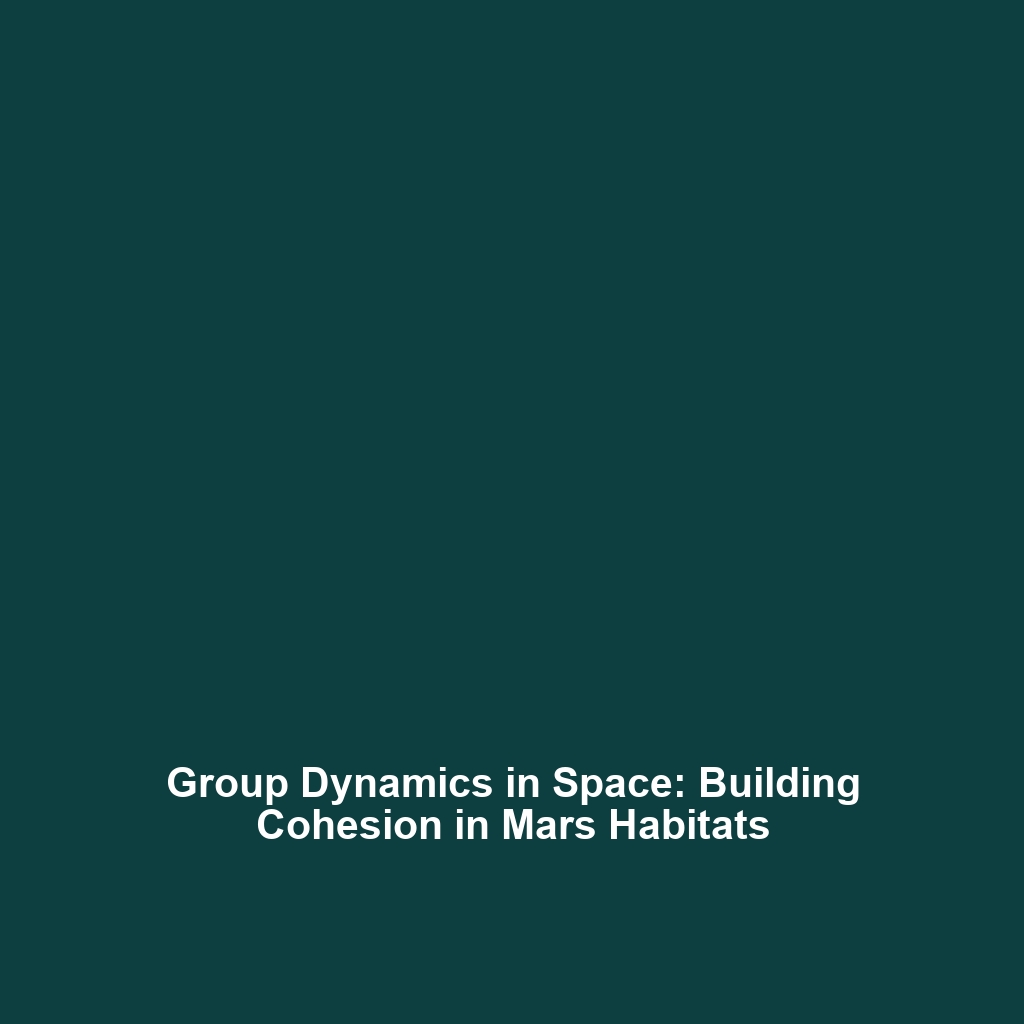Group Dynamics in Space Habitats: Research into Social Structures and Cohesion in Isolated Environments
Introduction
Understanding Group Dynamics in Space Habitats is pivotal for successful missions aimed at Colonizing Mars. As humanity seeks to establish a permanent presence on the Red Planet, grasping the social structures and cohesion within isolated environments becomes critical. Research in this field offers insights that can enhance team effectiveness, mental health, and overall mission success in extreme environments. This article explores key concepts, applications, current challenges, and future research trajectories that underscore the significance of human interaction in space habitats.
Key Concepts
Understanding Group Dynamics
Group dynamics refers to the psychological processes involved in the interactions among individuals within a group. In the context of Group Dynamics in Space Habitats, especially during missions to Colonize Mars, the following principles are crucial:
- Social Cohesion: How connected individuals feel to their group can impact behavior and performance.
- Communication Patterns: Effective communication is essential for collaborative work.
- Conflict Resolution: Strategies to manage disagreements that may arise during prolonged isolation.
- Leadership Styles: Different approaches to leadership can influence group morale and decision-making.
Applications and Real-World Uses
The implications of Group Dynamics research extend beyond theoretical frameworks. Notable applications include:
- Team Selection: Criteria based on psychological profiles that can enhance group performance in isolated habitats.
- Training Programs: Developing simulation-based training that mimics the experiences of living and working in extraterrestrial environments.
- Mission Planning: Incorporating social dynamics into the design and selection of crew members for future Mars missions.
Understanding how these dynamics work is essential for any effort aiming at successfully Colonizing Mars.
Current Challenges
Investigating Group Dynamics in Space Habitats presents several challenges, including:
- Isolation and Stress: Prolonged isolation can lead to increased stress levels, affecting group cohesion.
- Cultural Differences: Diverse backgrounds among crew members can cause miscommunications and conflict.
- Limited Real-World Testing: Few opportunities exist to study such environments before actual missions occurs.
Future Research and Innovations
The future holds promising innovations in Group Dynamics in Space Habitats. Upcoming research includes:
- AI-driven Behavioral Monitoring: Technology that can analyze interactions and suggest interventions to enhance group cohesion.
- Virtual Reality Simulations: Tools that offer immersive training experiences, preparing crews for Martian habitats.
- Psychological Support Systems: Development of on-board mental health resources to support crew well-being during long missions.
Conclusion
The exploration of Group Dynamics in Space Habitats is essential for ensuring the success of Colonizing Mars. As we stand on the brink of potential interplanetary living, understanding our social structures and enhancing group cohesion will be invaluable. Continued research and innovations in this field will not only benefit Mars missions but also provide insights applicable to other isolated environments on Earth.
For further reading on group dynamics and space exploration, consider exploring our articles on psychological resilience in space and team collaboration in isolated settings.

Leave a Reply